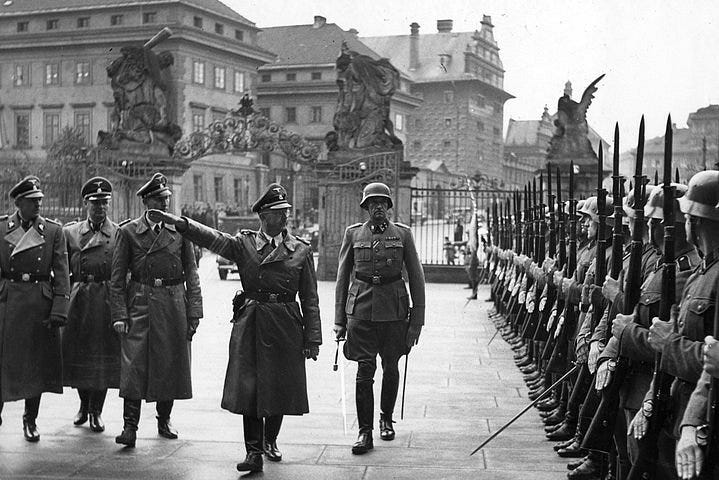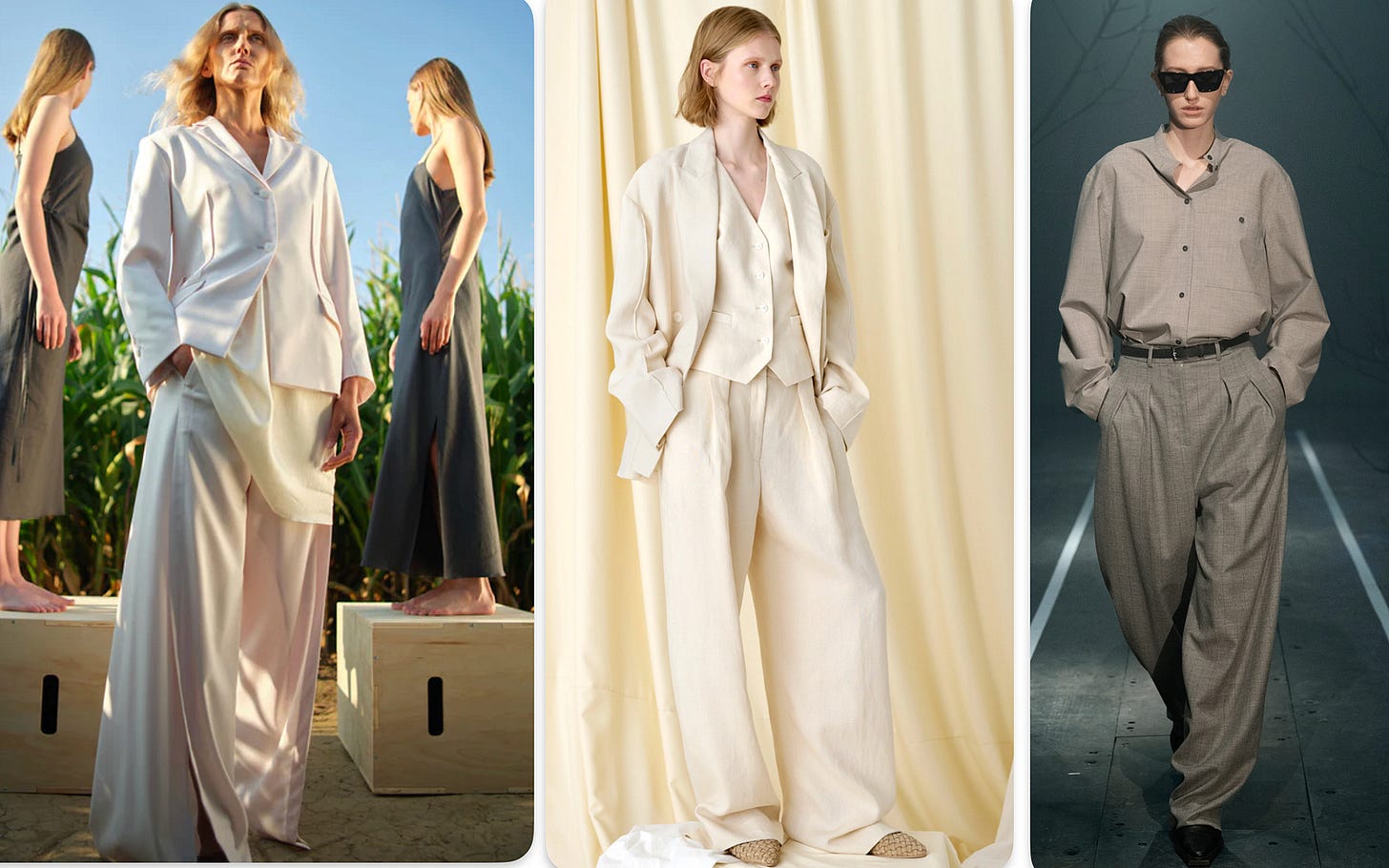Nehera | A Century of Rebirth from 1923 to 2024, Their Coats Are Truly Impressive
Nehera:A Century of Rebirth from 1923 to 2024, Their Coats Are Truly Impressive

This is the ninth article in the series on minimalist luxury brands. After more than a month of research and writing, I’ve come to realize just how many exquisitely designed garments exist. Each exploration is a new discovery of beauty.
Writing this series of brand introductions has been a process of cognitive growth for me. It’s expanded my understanding of the lives of different designers, brand management, and the essence of the garments themselves.
This installment introduces Nehera, a brand relatively well-known in China. Several boutiques in Shanghai carry this brand, and it’s frequently featured in major Chinese fashion media and by bloggers.
This widespread exposure may be due to the fact that the company’s owner, Ladislav Zdut, also owns an advertising company, Jandl, which collaborates with clients nationwide.
In Section 01, I’ll introduce the brand’s development timeline. In Section 02, I’ll share my favorite pieces from the brand, especially their coats, including trench coats, blazers, and overcoats.
01
1923: Jan Nehera founded his first fashion store in Prostějov, Czechoslovakia, marking the birth of the Nehera brand.
The entire Morava region, including Prostějov and Trenčín, roughly spans the eastern part of the Czech Republic and the western part of Slovakia. Named after the Morava River, this area is a significant manufacturing and textile hub for both countries.
Initially a locksmith, Jan Nehera opened a small clothing store with his partners, Jakub Sekanin and František Dokopi. The store was so successful that Nehera bought out his partners and became the sole operator of Nehera.
Despite his background as a locksmith, Nehera was interested in making clothes from a young age, as his parents were tailors.
1932: Nehera officially registered the brand and established the Nehera factory. He provided loans to merchants selling Nehera clothing, helping them open their own stores. Nehera gradually became the first full-cycle fashion company in Prague, handling everything from production to retail.
As demand soared, Nehera began using more modern equipment to address labor shortages, opening factory training schools and providing various living facilities, such as apartments and educational support for children.
These efforts reduced Nehera’s manufacturing costs, expanded their product range, and introduced multiple pricing tiers. The company also offered additional services like garment alteration and repair, eventually opening over 130 stores across Europe, the United States, and Africa, becoming a pioneer in the ready-to-wear industry.
1939: A branch was established in Trenčín. However, with the outbreak of World War II, Germany invaded Czechoslovakia, abolishing the government and creating the Protectorate of Bohemia and Moravia. The Nazis seized Nehera’s factory, using it for war supplies, and even Jan Nehera was imprisoned. These upheavals led to the brand’s production ceasing, and over the subsequent decades, the brand faded away. Jan Nehera eventually moved to Casablanca, Morocco, where he passed away in 1958.
1948: After World War II, Czechoslovakia became a socialist state. Nehera’s factory was nationalized and merged into the state-owned textile company in Prostějov. The Trenčín branch was renamed Odeva, which later became Slovakia’s largest menswear manufacturer.
1992: Following the Eastern European revolutions, Odeva was fully privatized and renamed Ozeta.
1998: Ladislav Zdút, owner of the Slovak advertising company Jandl, and his wife, Bibiana Zdútová, acquired the rights to the Nehera brand and began planning its revival.
2014: Ladislav Zdut officially relaunched the Nehera brand, hiring French stylist and designer Samuel Drira as creative director.
Samuel Drira, who previously worked at Hugo Boss, Hermès, and Damir Doma, brought with him a minimalist style, creating simple, practical, and high-quality garments. Although French, Drira’s designs were produced in the Czech Republic and Slovakia.
2015: Nehera showcased its first collection after the relaunch, “Blank Canvas,” at Paris Fashion Week, marking the brand’s re-entry into the high-end fashion market.
2017: Samuel Drira left Nehera, and Bibiana Zdútová took over management. Instead of appointing a new creative director, the entire design team took on the creative responsibilities, focusing on high-end fabrics, monochromatic palettes, and asymmetric cuts.
Both the headquarters of Nehera and Jandl are located in Bratislava, Slovakia.
2024: The brand launched a menswear line, and it’s favored by celebrities like Marion Cotillard, Tilda Swinton, and Isabelle Huppert.
These three actresses are mature and independent, with a strong sense of self.
Marion Cotillard is known for films like Taxi, La Vie en Rose, Midnight in Paris, and Allied. Isabelle Huppert’s notable film is The Piano Teacher. If you often watch French films, her name will be familiar.
Tilda Swinton, whom I mentioned earlier in the Cortana article, is often used as a muse by Rosa Esteva. I first learned about her through John Berger’s documentary The Seasons in Quincy, where her unique aura was immediately apparent. Her artistic background and taste are indeed exceptional and distinctive.
Nehera has also collaborated with fashion photographer Michal Pudelka, whose work is top-notch, and who has also worked with brands like ZucZug and Valentino.
02
In an interview, Ladislav Zdut was asked what Nehera’s most iconic item is. He answered, “Jackets, especially those with pockets.” Nehera’s jackets are known for their practical pockets.
I’ve thought about the topic of women’s pockets before. I noticed that my partner Eddy’s pants pockets are so large that they can easily hold a phone, while my pockets are so shallow that I can’t even keep my phone in them when cycling — it must be held in my hand. Even coat pockets are often shallow, only good for carrying a tissue.
It made me wonder if capitalists intentionally make pockets shallow on clothes and pants so that consumers are forced to buy more profitable bags. On this level, I have a bit of a distaste for bags and don’t own any except for a North Face backpack.
Nehera specializes in jackets, blazers, and overcoats. After browsing their website and lookbook, I found that the lookbook pieces are more attractive. Perhaps it’s because of the season, but the items on the website don’t match the variety and quality shown in each season’s lookbook.
The best items from the website are the blazers shown in the image below.
From the images, it’s clear that some of Nehera’s pieces have oversized, loose silhouettes, similar to By Malene Birger , making them suitable for those with larger frames.
For example, the three oversized pants below might be hard for someone shorter to pull off.
The oversized blazers and trench coats shown below also follow this trend.
However, some pants and coats have more fitted silhouettes, making them more versatile.
For instance, the two suits from Pre-Fall 2021, with cropped pants and sharp blazers, feature many structured and angular designs, giving an overall impression of sophistication.
The two outfits below have relatively relaxed cuts, especially in the pants, presenting a casual, natural silhouette.
The tops, though simple in design, incorporate refined details like double-breasted buttons and structured shoulder lines to enhance the overall look. The right-side outfit, with its three-quarter sleeves, adds a touch of lightness.
Nehera’s lookbooks feature many layering techniques, such as pairing matching blazers with similar colored outerwear to create a layered look, highlighting Nehera’s expertise in outerwear.
Another layering technique Nehera excels at is combining sheer chiffon or organza underpinnings with structured solid vests, waistcoats, or trench coats.
The use of sheer fabrics reminds me of Cortana’s silk tulle series.
In the left look, a lightweight white shirt is paired with a cropped knit vest, creating rich layering on the upper body. Loose pants extend this layering and contrast with the upper body, making the overall look more three-dimensional and varied.
The middle look swaps the vest for a trench coat, and the underlayer is extended with a more flowy long blouse over a cropped shirt.
The right-side look emphasizes structure and cut. The exaggerated shoulder design creates a prominent upper body, complemented by a layered shirt underneath, adding drama. The loose pants below balance the complexity above with simplicity.
For short Fall/Winter coats, I like the following three outfits.
The left outfit features a striped knit sweater and a skirt with matching stripes, creating a harmonious look. The wide camel coat’s warm hue, paired with the white inner layer and skirt, adds depth and richness to the overall ensemble.
The middle outfit centers on a gray wool suit with a clean, slightly loose fit, creating a casual yet formal look.
The carrot pants, a common sight during Samuel Drira’s tenure as creative director, are something I’m looking forward to finding in cashmere this year — they look so warm and comfortable.
For long Fall/Winter coats, I like the following two outfits. Although the right one doesn’t align with Nehera’s typical color palette, its silhouette and smooth lines are truly captivating.
The overall styling showcases Nehera’s trench coat layering technique. Nehera’s long trench coats and overcoats are often paired with matching blazers and pants underneath.
These two outfits, being full sets, are more harmonious compared to the previously mentioned trench coats. The loose coats and long pants add a sense of relaxation.
For the 2023 FW Fall/Winter season, the overall theme is black. While the cuts and fabrics are decent, I still think Nehera is better suited for lighter shades like beige and white.
The two outfits below, reminiscent of Proenza Schouler, would pair well with shoes from that brand.
As for the Spring/Summer collection, my favorite pieces are these two vests. The design specifically shapes the belly area, which is perfect for covering up my small tummy. The model’s windblown hairstyle is also very appealing.
These styles are somewhat reminiscent of Khaite.
Another styling tip is to pair structured tops with loose pants. Tucking the top in or opting for a cropped version can create a taller silhouette.
Finally, here’s a unique design: these two pairs of pants with a floral knot in the front. This is the first time I’ve seen such a design.
The knot not only adds decorative appeal but also gives the pants a natural drape.
Postscript
As shown above, Nehera’s overall design level remains strong, with its trench coats, overcoats, and suit sets being the standout pieces. These are undoubtedly the brand’s specialties.
Although Nehera was established in 1923, the brand only began designing clothes again in 2014, coinciding with the rise of the minimalist luxury trend. This was the time when brands like The Row,Toteme ,Khaite,Gabriela Hearst andCult Gaiaemerged, all sharing the same practical and minimalist design philosophy. Therefore, I decided to write about them together.
While browsing Nehera-related articles, I came across a quote that resonated deeply with me:
“Yet life is so simple in its essence. This is also why the tendency to love minimalism is awakening in us more and more.
Celebrate moderation, clean lines, simple geometric shapes, monochromaticity, clothes that are easy to read, without unnecessary decorations and ornaments. The minimalist style is timeless. Inconspicuous at first glance, but when you take a closer look, you will be charmed by its sophistication.”
by: pamperherself





















